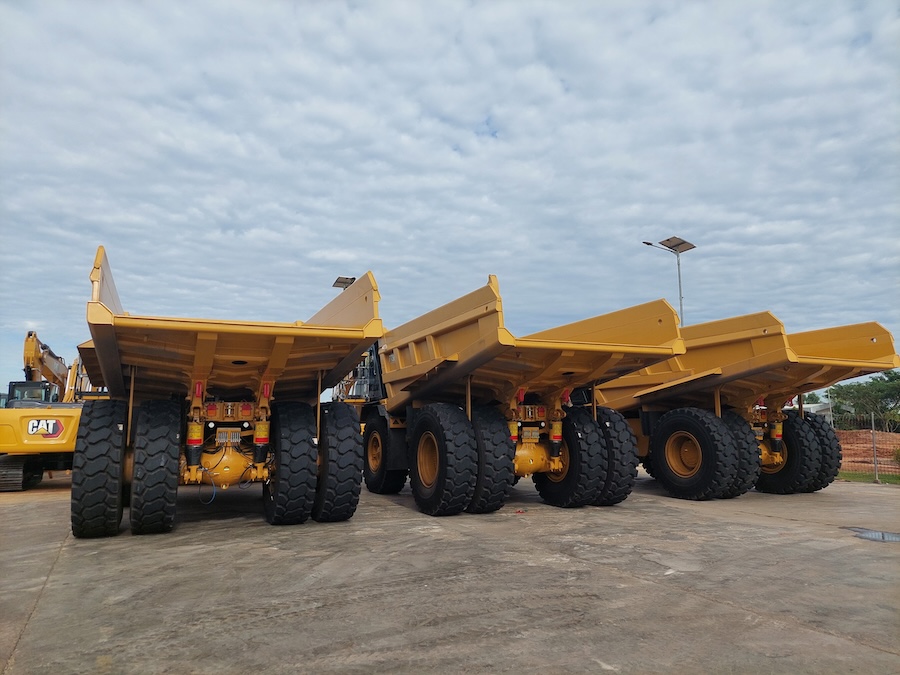
View the complete article here.
As environmental concerns grow and regulations tighten, the trucking industry is under increasing pressure to adopt sustainable practices. Building a sustainable trucking fleet not only helps protect the environment but also offers long-term cost savings and improved operational efficiency.
Assessing the Current Fleet
Before making any changes, it’s essential to evaluate the state of your current fleet. Start by conducting an audit to assess fuel usage, emissions levels, and vehicle conditions. Identify inefficiencies, such as high fuel consumption or outdated engines, which can significantly impact your carbon footprint. By understanding the strengths and weaknesses of your fleet, you can target the areas that need the most improvement—from replacing older trucks to optimizing routes.
Adopting Fuel-Efficient Vehicles
Fuel efficiency is a key component of building a sustainable fleet. Replacing older trucks with newer, more fuel-efficient models is a significant step toward reducing your fleet’s environmental impact. Hybrid trucks, which combine electric motors with internal combustion engines, can cut fuel consumption and emissions. Even more promising, fully electric trucks are becoming increasingly viable for short-haul and last-mile delivery applications.
Though electric trucks are still in development for long-haul operations, their adoption is expected to rise as technology advances and charging infrastructure improves. In the meantime, upgrading to trucks that comply with the latest emissions standards and deliver better fuel efficiency is a smart move.
Exploring Alternative Fuels
Switching to alternative fuels is another way to improve sustainability. Several cleaner fuel options are available today, including:
- Biodiesel: This renewable fuel can be used in diesel engines and produces fewer emissions than traditional diesel.
- Natural gas: Compressed natural gas (CNG) and liquefied natural gas (LNG) are cleaner-burning fuels that are becoming popular alternatives to diesel in some regions.
- Hydrogen: Hydrogen fuel cell technology offers zero emissions but is still emerging and requires significant infrastructure investment.
- Electric: Electric trucks, while ideal for urban environments, are gradually being developed for heavier loads and longer distances.
Each fuel option has its pros and cons—so it’s crucial to assess which works best for your fleet based on your routes, truck types, and long-term goals.
Optimizing Routes and Reducing Idling
Route optimization is an effective way to reduce fuel consumption and emissions. Using advanced software, you can plan the most efficient routes—cutting down on unnecessary driving and fuel use. This technology considers factors such as traffic, road conditions, and delivery schedules to minimize travel time.
In addition to route optimization, reducing idle time can significantly improve fuel efficiency. Idling trucks waste fuel and contribute to pollution, so encourage drivers to turn off engines when not in motion—especially during loading or unloading.
Incorporating Telematics for Sustainability
Telematics systems are powerful tools for monitoring fuel efficiency and improving overall fleet performance. These systems provide real-time data on driving habits, fuel consumption, and vehicle diagnostics. By analyzing this data, you can identify areas for improvement and take action to reduce fuel waste and emissions.
For example, telematics can track harsh braking, rapid acceleration, and excessive idling—behaviors that negatively impact fuel efficiency. With this information, you can offer driver coaching or adjust operational practices to improve sustainability.
Regular Maintenance for Fuel Efficiency
Keeping your trucks in top condition is vital for both safety and sustainability. Regular maintenance tasks such as checking tire pressure, tuning engines, and lubricating components can improve fuel efficiency. For instance—underinflated tires increase rolling resistance, leading to higher fuel consumption, while well-maintained engines burn fuel more cleanly.
Establishing a maintenance schedule ensures that your trucks are running efficiently, extending their lifespan and reducing the need for costly repairs.

Driver Training and Eco-Driving Initiatives
Your drivers play a significant role in achieving sustainability goals. By educating them on eco-friendly driving practices, you can maximize fuel efficiency and minimize emissions. Some key practices to emphasize include:
- Avoiding aggressive driving: Excessive speeding, hard braking, and rapid acceleration all increase fuel consumption.
- Reducing idling: Encourage drivers to turn off their engines during long stops.
- Using cruise control: Maintaining a steady speed improves fuel efficiency on highways.
To incentivize eco-driving, consider implementing a rewards program for drivers who consistently demonstrate fuel-efficient driving behaviors.
Investing in Renewable Energy Infrastructure
As your fleet moves toward sustainability, investing in renewable energy infrastructure can further reduce your environmental impact. For example, installing electric charging stations for your electric trucks or hybrid vehicles helps build a greener supply chain. You can also explore using solar panels or other renewable energy sources to power your facilities, reducing the carbon footprint of your entire operation.
These investments can also future-proof your fleet as government regulations and consumer expectations around sustainability continue to evolve.
Measuring Progress and Setting Sustainability Goals
It’s essential to track your fleet’s progress toward sustainability by measuring key performance indicators (KPIs) such as fuel consumption, emissions reductions, and maintenance costs. Set clear, measurable goals for reducing emissions over time—and regularly review your progress. These metrics will not only help you gauge the effectiveness of your sustainability efforts but also guide future decisions.
Be prepared to adjust your strategy as new technologies and best practices emerge, ensuring that your fleet remains at the forefront of sustainability.
View the complete article here.
How can I make my trucking fleet more sustainable?
To build a sustainable trucking fleet, assess your current fleet’s fuel usage and emissions, adopt fuel-efficient vehicles (such as hybrid or electric trucks), explore alternative fuels like biodiesel and natural gas, optimize routes, reduce idling, implement telematics for monitoring, and invest in renewable energy infrastructure.













































